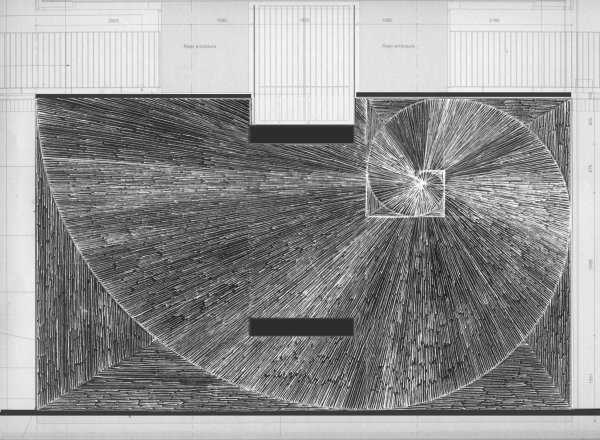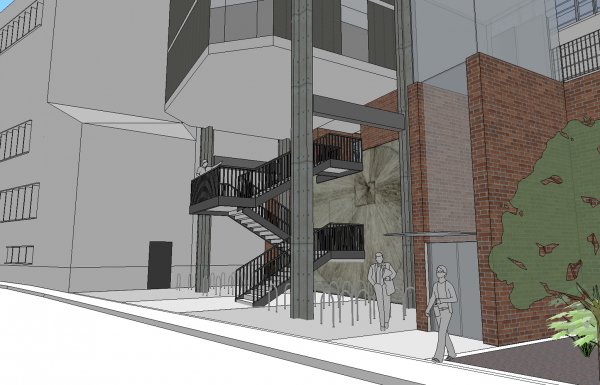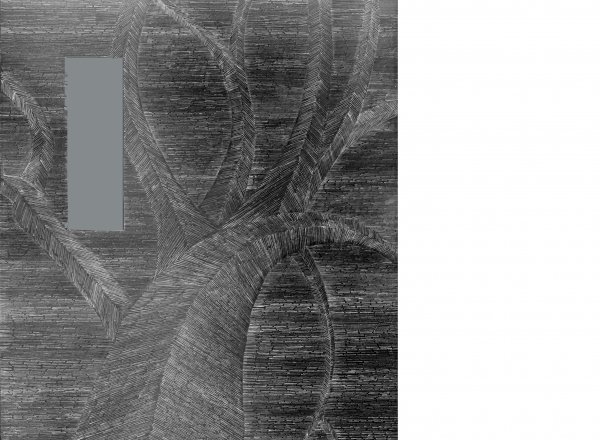Slate Works
Slate Work East 2016
Corn Exchange Entrance
The David Attenborough Building
Commissioned by the University of Cambridge
This work is inspired by the architectural and mathematical principles found within myriad forms in nature that grow with the inherent numerical order observed in the 13thcentury and called the Fibonacci sequence. The numbers from this sequence are manifested throughout nature in the forms and designs of many animals and plants and have also been reproduced in various manners in art and architecture.
Architecturally, the line of the design references the ‘golden mean’ or ‘golden section’, a simple ratio theorized as symmetry, proportion and harmony. The artists have reinterpreted this iconic form in their chosen material of slate, capturing an exquisitely crafted complexity of line that creates a spiral. The colour of the slate medium echoes the tall grey towers, landmarks of The David Attenborough Building, providing an important visual link with the Brutalist architecture.
Constructed from over thousands of layers of slate and built up to create an intense stratum visual effect, Welsh slate is acknowledged as the finest of its type worldwide; light grey in colour with a subtle reflective surface, the riven cut edge lends a chalky white slant to the grey, and the material used in the artwork is a waste product from the roof tiling industry.
Slate Work South 2016
Pembroke Street Arch
The David Attenborough Building
Commissioned by the University of Cambridge
This work takes inspiration from a black walnut tree photographed by the artists in the Cambridge University Botanic Garden. This acknowledges both the history of the New Museums Site as the original home to the botanical garden in the 18th century and the archetypal ‘tree of life’ that has been used in science, philosophy, art and mythology for centuries. It alludes to the connection of all life on planet Earth, serving as a metaphor for common descent in evolutionary biology as famously captured by Darwin’s drawing in On the Origin of Species.
The artwork is akin to a graphite pencil drawing with subtle shading and tonalities that shift and change as the light plays across the slate surface. The colour of the slate medium echoes the tall grey towers, iconic landmarks of The David Attenborough Building, providing an important art/architectural visual link.
Constructed from over thousands of layers of slate and built up to create an intense stratum visual effect, within the wall is discrete habitat spaces to attract a range of wildlife including bats, solitary bees, spiders and insects. The Museum of Zoology launched a project with local schools and over 3,000 snail shells were collected, many of which will be placed into the wall.
Over 500 million years old, Welsh slate is acknowledged as the finest of its type worldwide; light grey in colour with a subtle reflective surface, the riven cut edge lends a chalky white slant to the grey, and the material used in the artwork is a waste product from the roof tiling industry.
Masonry: Stonemasons Armstrong Masonry




